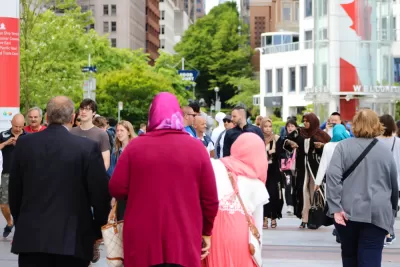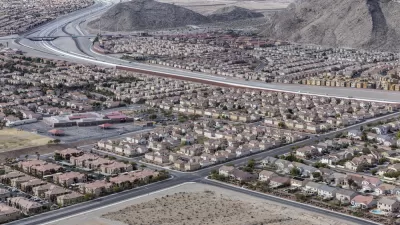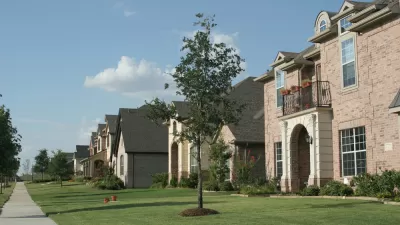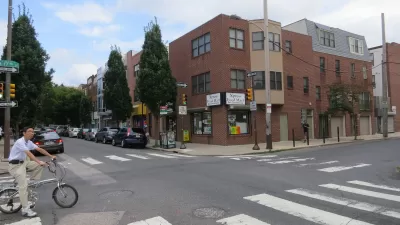Exurbs may be growing faster, but, when surveyed, Millennials report greater happiness in cities.

According to a study from Rutgers University, Millennials in cities reported higher levels of happiness than did their peers in smaller communities. The study controlled for factors like race, income, gender and health. "When it comes to place, Millennials are different from the generations that came before them. Unlike older Americans, they tend to be happier in larger, more urban environments," Richard Florida writes for CityLab.
Participants reported whether they were not too happy, pretty happy or very happy everyday for a short period. "They use detailed data from the General Social Survey (GSS), which has collected information for nearly a century on the happiness, or subjective well-being (“SWB”), of five separate generations: the Lost Generation (born between 1883 and 1924); the Silent Generation (1925–1942); Baby Boomers (1943–1960); Generation X (1961–1981); and Millennials (1992–2004)," Florida reports.
This is a significant finding, because data shows that Millennials are increasingly moving to the far-out suburbs. Florida argues that Millennials being priced out of cities might move to suburbs, but they remain an urban generation.
FULL STORY: Millennials Are Happiest in Cities

Planetizen Federal Action Tracker
A weekly monitor of how Trump’s orders and actions are impacting planners and planning in America.

Restaurant Patios Were a Pandemic Win — Why Were They so Hard to Keep?
Social distancing requirements and changes in travel patterns prompted cities to pilot new uses for street and sidewalk space. Then it got complicated.

Map: Where Senate Republicans Want to Sell Your Public Lands
For public land advocates, the Senate Republicans’ proposal to sell millions of acres of public land in the West is “the biggest fight of their careers.”

Maui's Vacation Rental Debate Turns Ugly
Verbal attacks, misinformation campaigns and fistfights plague a high-stakes debate to convert thousands of vacation rentals into long-term housing.

San Francisco Suspends Traffic Calming Amidst Record Deaths
Citing “a challenging fiscal landscape,” the city will cease the program on the heels of 42 traffic deaths, including 24 pedestrians.

California Homeless Arrests, Citations Spike After Ruling
An investigation reveals that anti-homeless actions increased up to 500% after Grants Pass v. Johnson — even in cities claiming no policy change.
Urban Design for Planners 1: Software Tools
This six-course series explores essential urban design concepts using open source software and equips planners with the tools they need to participate fully in the urban design process.
Planning for Universal Design
Learn the tools for implementing Universal Design in planning regulations.
Heyer Gruel & Associates PA
JM Goldson LLC
Custer County Colorado
City of Camden Redevelopment Agency
City of Astoria
Transportation Research & Education Center (TREC) at Portland State University
Camden Redevelopment Agency
City of Claremont
Municipality of Princeton (NJ)





























